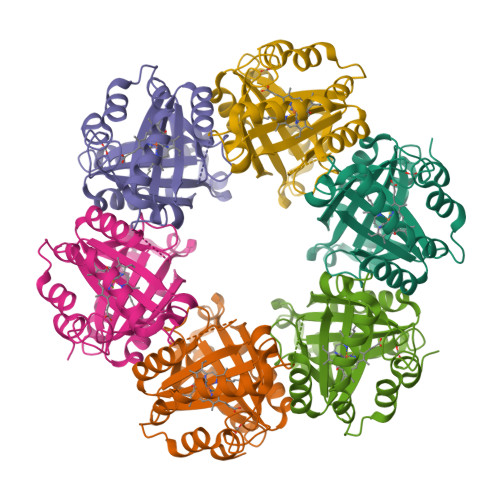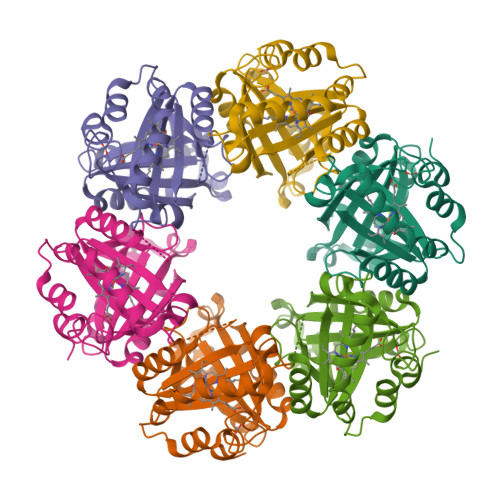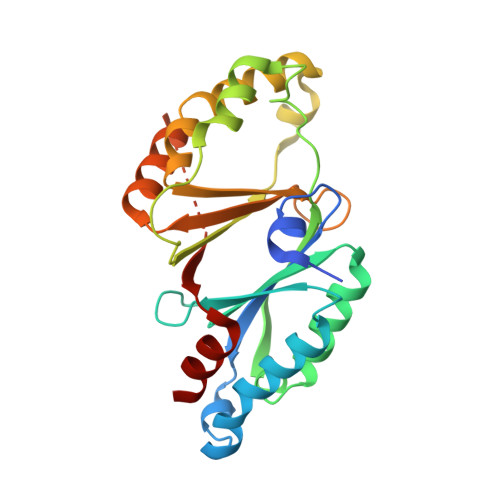Crystal Structure of Chlorite Dismutase, a Detoxifying Enzyme Producing Molecular Oxygen
De Geus, D.C., Thomassen, E.A.J., Hagedoorn, P.L., Pannu, N.S., Van Duijn, E., Abrahams, J.P.(2009) J Mol Biology 387: 192
- PubMed: 19361444
- DOI: https://doi.org/10.1016/j.jmb.2009.01.036
- Primary Citation of Related Structures:
2VXH - PubMed Abstract:
Chlorite dismutase (Cld) is a key enzyme of perchlorate and chlorate respiration. This heme-based protein reduces the toxic compound chlorite into the innocuous chloride anion in a very efficient way while producing molecular oxygen. A sequence comparison between Cld homologues shows a highly conserved family. The crystal structure of Azospira oryzae strain GR-1 Cld is reported to 2.1 A resolution. The structure reveals a hexameric organization of the Cld, while each monomer exhibits a ferredoxin-like fold. The six subunits are organized in a ring structure with a maximal diameter of 9 nm and an inner diameter of 2 nm. The heme active-site pocket is solvent accessible both from the inside and the outside of the ring. Moreover, a second anion binding site that could accommodate the assumed reaction intermediate ClO(-) for further transformation has been identified near the active site. The environment of the heme cofactor was investigated with electron paramagnetic resonance spectroscopy. Apart from the high-spin ferric signal of the five-coordinate resting-state enzyme, two low-spin signals were found corresponding to six-coordinate species. The current crystal structure confirms and complements a recently proposed catalytic mechanism that proceeds via a ferryl species and a ClO(-) anion. Our structural data exclude cooperativity between the iron centers.
Organizational Affiliation:
Department of Biophysical Structural Chemistry, Leiden Institute of Chemistry, Leiden University, Leiden, The Netherlands. d.de.geus@chem.leidenuniv.nl



















